Results 11,161 to 11,170 of 12094
Thread: Anandtech News
-
06-04-21, 09:28 AM #11161
Anandtech: Computex 2021: GIGABYTE Server Updates MZ72-HB0 For Dual Socket 3rd Gen EP
During Computex 2021 in Taipei, although the event is all-digital due to the Coronavirus pandemic, GIGABYTE Server has showcased its newly revised MZ72-HBO dual-socket motherboard with support for AMD's 3rd generation EPYC 7003 processors. The GIGABYTE Server MZ72-HBO boasts support for up to 128 cores and 256 threads (64c/128t per socket), dual 10 GbE Base-T Ethernet, up to 4 TB of DDR4-3200 memory, and five full-length PCIe 4.0 slots.
In the server workspace, the use case for high-core count processors includes data centers, cloud computing, and MPI parallel programming. This is where the GIGABYTE Server MZ72-HB0 comes in, with support for up to 280 W TDP chips. This means it can support a maximum of 128-cores and 256 threads of powerful Zen 3 EPYC 7003 goodness across both AMD SP3 sockets. Each of the SP3 sockets includes eight memory slots (sixteen in total), with support for up to 2 TB of DDR4-3200 memory per processor operating in eight-channel, with RDIMM, LRDIMM, and 3DS memory types all supported.
The GIGABYTE Server MZ72-HB0 Revision 3.0 boasts a wide variety of features, including lots of storage, with one PCIe 4.0 x4 M.2 slot, four 7-pin SATA ports, and three SlimSAS ports offering support for either twelve SATA or three PCIe 4.0 U.2 NVMe drives. Included on the board is an ASPEED AST2500 BMC controller, which allows access to GIGABYTE's Management Console (GMC), and includes a Gigabit Management LAN port for remote access. Other networking capability includes a pair of 10 GbE Base-T LAN ports powered by a Broadcom BCM57416 controller. On the lower portion of the board are five full-length PCIe 4.0 slots that can operate at x16/x16/x16/x8/x8, while I/O on the rear panel includes two USB 3.0, a COM port, and a D-sub video output for the BMC.
At the time of writing, we are unsure when the GIGABYTE Server MZ72-HB0 will be available at retail, however the company has started channel distributions and we actually have a review unit in-house on our Milan test-bench. However, the previous MZ72-HB0 (revision 1.0) model with support for EPYC 7002 processors retails between $700 and $900 depending on the retailer. Due to this, we expect the newer revision 3.0 model to fall in a similar price bracket.
Source: GIGABYTE Server
Gallery: Computex 2021: GIGABYTE Server Updates MZ72-HBO For Dual Socket 3rd Gen EPYC





More...
-
06-04-21, 10:45 AM #11162
Anandtech: Computex 2021: ASRock Announces Mars 5000U Series Mini PC
During Computex 2021, ASRock unveiled the latest series in its Mars mini-PC range, the Mars 5000U. ASRock claims it's the thinnest AMD mini PC globally and comes equipped with AMD's latest 5000 series APU. It features support for DDR4-3200 SO-DIMM memory, one PCIe 3.0 x4 M.2 slot, a 2.5" SATA hard drive bay, and an Intel Wi-Fi 6 interface.
The ASRock Mars 5000U series comes in a svelte and very slimline black brushed aluminum chassis, with dimensions of 194 x 150 x 26 mm (W x D x H), making it a single mm thicker than a regular chassis fan. Due to there being very little wiggle room for space inside, at just 0.7 liters, ASRock uses a proprietary fan and heatsink combination to keep the AMD Ryzen 5000U APU cool. For memory, there's a pair of memory slots that can accommodate up to 64 GB of DDR4-3200 SO-DIMM memory, while storage capabilities include one PCIe 3.0 x4/SATA M.2 slot and one 2.5" SATA hard drive bay.
It is powered by a 65 W/19 V adaptor akin to a laptop charger and includes a decent selection of I/O. Included are four USB 3.2 G1 Type-A (two rear, two front), one USB 3.2 G1 Type-C (front), and two USB 2.0 (front) ports. The Mars 5000G also includes a 3-in-1 card reader including SD, SDHC, and SDXC support and two video outputs consisting of an HDMI and D-Sub. Networking options include one unspecified Gigabit Ethernet port with an Intel AX200 wireless interface offering Wi-Fi and BT 5.0 connectivity. An unspecified audio solution also powers a 3.5 mm microphone and 3.5 mm headphone jack combination.
The ASRock Mars 5000U series looks very similar to the previous Mars 4000 series mini-PC series. The only difference is that the newer model supports the upcoming Ryzen 5000 APUs based on AMD's Zen 3 microarchitecture. ASRock hasn't stated which APUs it will offer. Pricing is currently unknown.
More...
-
06-07-21, 01:50 PM #11163
Anandtech: Computex 2021: TeamGroup Announces its First DDR5-4800 Memory Module
Back in December 2020, TeamGroup announced its intentions for the switch to DDR5 memory on future platforms. During Computex 2021, TeamGroup claims it has 'successfully taken the lead over competing PCB manufacturers', with the first of its announced products for DDR5, the Elite DDR5-4800 16 GB module. Back at CES 2021, ADATA claimed that it has a DDR5 module in hand, but it sent us rendered images. We ultimately disapprove of this practice - don't state you have it in hand until you are ready to provide us actaul photographs of the thing. Unfortunately, TeamGroup has done the same here, providing renders. not photographs.
The Road to DDR5
Over the last year, we've highlighted certain aspects of DDR5 memory and what users can expect, including features, memory latency, and technological advancements over the current DDR4 memory. Some of which can be seen below:
- Here's Some DDR5-4800: Hands-On First Look at Next Gen DRAM
- Insights into DDR5 Sub-timings and Latencies
- Cadence DDR5 Update: Launching at 4800 MT/s, Over 12 DDR5 SoCs in Development
- DDR5 Memory Specification Released: Setting the Stage for DDR5-6400 And Beyond
TeamGroup's announcement hasn't come as a surprise given how long DDR5 has been speculated and discussed over the last year. One of the first platforms to supposedly feature DDR5 support is Intel's Alder Lake microarchitecture, which is expected to land in Q4 2021/Q1 2022. The first series of DDR5 from TeamGroup will be based on its 'Elite' memory series, with the first kit to feature speeds of 4800 MT/s, sub-timings of CL40-40-40-77, and will feature an operating voltage of 1.1 V.
One of the primary features of DDR5 is integrated on-die ECC, which is designed to improve overall system stability (but is actually more to do with yield). This is different to module-wide ECC, which DDR5 does not support by default (you still need a module-wide ECC module to support ECC technology). The information provided by TeamGroup say the Elite DDR5-4800 has double the banks compared to DDR4, with an all-black PCB. It is unclear whether or not the Elite DDR5-4800 will feature heatsinks, or they will operate with a bare PCB. We also know that it will feature 16 GB of capacity and will likely be sold as a dual-channel kit, and perhaps individually.
At present, there's no information on latency timings or how much the Elite DDR5-4800 16 GB module will cost, but TeamGroup does state that it will be unveiling its 'new generation' of products in September 2021.
More...
-
06-07-21, 01:50 PM #11164
Anandtech: NZXT Announces N7 Z590 Motherboard For Rocket Lake
In July last year, we reviewed NZXT's N7 Z490 motherboard for Intel's 10th generation Comet Lake processors. Typically later to the market than other vendor's key models, NZXT has announced its latest option which aims to benefit from the PCIe 4.0 support in Rocket Lake. Enter the N7 Z590. Some of the features include a full-cover panel across the PCIe slot area, Wi-Fi 6E, 2.5 GbE, dual M.2, support for DDR4-4600 memory, and is advertised with a 14-phase power delivery.
NZXT entered the motherboard market for the first time back in 2018 with the N7 Z370, which we also reviewed. Typically known more for its clean-cut chassis and cooling products, NZXT first tasked the job of providing the PCB and componentry to ECS for the Z370, and then switched to ASRock for Z490. It is unclear which vendor NZXT relies on for the N7 Z590, but we expect the relationship with ASRock is still intact, but we will confirm this when we know.
The N7 Z590 is similar to the previous model in terms of aesthetics, with models available in either matte black or white and uses a full cover PCIe slot armor and more armor covering the right-hand side of the board. Despite not including any integrated RGB LED lighting onboard, NZXT is using its CAM software to control the four RGB LED headers located on the board, with an integrated fan controller adding control of cooling with a total of seven 4-pin headers located on the board.
In terms of specification, the NZXT N7 Z590 has two full-length PCIe slots, one operating at PCIe 4.0 x16 and the other at PCIe 3.0 x4, with three PCIe 3.0 x1 slots. In the top right-hand corner is four memory slots, with support for DDR4-4600 and a total capacity of up to 128 GB. Storage capabilities include two M.2 slots, one featuring support for PCIe 4.0 x4 drives and the second slot supporting PCIe 3.0 x4 and SATA drives. There are four SATA ports for conventional storage and optical devices that also support RAID 0, 1, 5, and 10 arrays.
The rear panel has a much better selection of input and output than the N7 Z490, with one USB 3.2 G2x2 Type-C, three USB 3.2 G2 Type-A, four USB 3.2 G1 Type-A, and two USB 2.0 ports. A Realtek ALC1220 HD audio codec controls the five 3.5 mm audio jacks and S/PDIF optical output, while wireless capability comes from Intel's latest AX210 Wi-Fi 6E CNVi. Taking care of wired networking is a Realtek RTL8125BG 2.5 GbE controller, while also on the rear panel is an HDMI 2.0 video output and a small clear CMOS button.
The NZXT N7 Z590 is currently available on NZXT's website for $280.
Source: NZXT
Gallery: NXZT Announces N7 Z590 Motherboard For Rocket Lake





Related Reading- The NZXT N7 Z490 Motherboard Review: From A Different Direction
- The NZXT N7 Z370 Motherboard Review: A New Player in the Motherboard Market
- The Intel Z590 Motherboard Overview: 50+ Motherboards Detailed
- Intel Rocket Lake (14nm) Review: Core i9-11900K, Core i7-11700K, and Core i5-11600K
More...
-
06-07-21, 04:51 PM #11165
Anandtech: Apple Announces iOS 15 and iPadOS 15: The Highlights
Today at Apple’s 2021 WWDC event, the company unveiled the new iOS 15, iPadOS 15 operating systems. This year, Apple presented a large number of new features and improvements across both the main OS components as well as Apple’s core ecosystem apps. While we are just scratching the surface, we picked out a few highlight features that are looking forward to test later in the year once the new versions will be hitting consumers in their final versions.
More...
-
06-08-21, 07:09 AM #11166
Anandtech: Computex 2021: G.Skill Trident Z Royal Elite With DDR4-4000 CL14, Tight La
During Computex 2021, G.Skill has announced a couple of new memory kits featuring its regal-looking Trident Z Royal Elite heatsinks. Available with super tight primary latencies of CL14, the new Trident Z Royal Elite kits will be available in DDR4-4000 and DDR4-3600, with various capacities available, including 16, 32, 64, and 128 GB kits.
There are many different parts of a system that can add varying levels of aesthetic glamor, including the motherboard, CPU cooler, fans, anything with RGB on it, but almost everything struggles to be as bling as G.Skills Trident Z Royal Elite memory. Launched back in April, the G.Skill Trident Z Royal Elite comes available in gold and silver. Both color variants feature eight customizable RGB LED lighting zones, with a patented crystalline patterning across for that regal touch.
Touching on the specifications, the top kit features speeds of DDR4-4000 with CL14-14-14-35, at a larger-than-expected operating voltage of 1.55 V. It will be available in two varieties, including a 16 GB (2 x 8 GB), and a 32 GB (2 x 16 GB) kit. The DDR4-3600 kits come with equally tight CL14 latencies, with a slightly lower 1.45 V operating voltage, and will be available in 16 GB (2 x 8 GB), 32 GB with the option for 2 x 16 GB or 4 x 8 GB kits. For users looking for more capacity, there are options at 64 GB with 4 x 16 GB and a large 128 GB kit with 8 x 16 GB.
G.Skill says the new Trident Z Royal Elite DDR4-4000 and DDR4-3600 CL14 kits will be available from June but haven't provided us with pricing at the time of writing.
Gallery: Computex 2021: G.Skill





More...
-
06-08-21, 03:28 PM #11167
Anandtech: An AnandTech Interview with TSMC: Dr. Kevin Zhang and Dr. Maria Marced
In the past week, TSMC ran its 2021 Technology Symposium, covering its latest developments in process node technology designed to improve the performance, costs, and capabilities for its customers. In this event, TSMC discussed its increasing use of Extreme Ultra Violet (EUV) lithography for manufacturing, enabling it to scale down to its 3nm process node, well beyond that of its competitors. TSMC also addressed the current issues surrounding demand for semiconductors, along with announcing that it is building new facilities for advanced packaging production. Joining CEO Dr. CC Wei as part of the keynote presentation was AMD’s CEO Dr. Lisa Su, Qualcomm’s President (and soon to be CEO) Cristiano Amon, and Ambiq’s Founder and CTO Scott Hanson.
As part of the proceedings, TSMC offered AnandTech a 30-minute interview with Dr. Kevin Zhang, SVP of Business Development, and Dr. Maria Marced, President of TSMC EU, as an opportunity to learn more about TSMC’s driving directions as well as cooperation with industry partners.
More...
-
06-09-21, 11:10 AM #11168
Anandtech: Xilinx Expands Versal AI to the Edge: Helping Solve the Silicon Shortage
Today Xilinx is announcing an expansion to its Versal family, focused specifically on low power and edge devices. Xilinx Versal is the productization of a combination of many different processor technologies: programmable logic gates (FPGAs), Arm cores, fast memory, AI engines, programmable DSPs, hardened memory controllers, and IO – the benefits of all these technologies means that Versal can scale from the high end Premium (launched in 2020), and now down to edge-class devices, all built on TSMC’s 7nm processes. Xilinx’s new Versal AI Edge processors start at 6 W, all the way up to 75 W.
More...
-
06-11-21, 12:26 PM #11169
Anandtech: Seagate Signs HAMR Deal with Showa Denko: Secures Second Source for HAMR P
Seagate this week signed an agreement with Showa Denko in a bid to secure a second source of platters for its hard drives based on heat assisted magnetic recording (HAMR) technology. Under the terms of the deal, Seagate will evaluate SDK's existing materials for HAMR media and the two companies will jointly develop future materials.
Seagate started to ship its Exos HDDs featuring HAMR inside its Lyve storage systems late last year. These hard drives use key components, such as recording heads with a near field transducer that heats up the media as well as glass platters with an FePt magnetic layer, developed and made entirely in-house. Being a vertically integrated company, Seagate has enough production capacities to continue building platters for HAMR drives internally, but having a second source for a crucially important component makes a lot of sense for high-volume products.
Having spent over 10 years on HAMR pathfinding and research, Showa Denko formally began to develop its glass platters for HAMR HDDs in February, 2020. Back then, the company said that HAMR would achieve areal density of 5-6 Tb/in2 in the future, enabling 3.5-inch hard drives with eight or nine platters to store 70 TB – 80 TB of data.
By now, Showa Denko has finished development of its first HAMR media material featuring a FePt magnetic alloy and technology to mass-produce hard drive platters. Under the terms of the agreement between SDK and Seagate, the hard drive maker will evaluate the material designed by the Japanese company. Going forward, Seagate and SDK will jointly develop new magnetic alloys for HAMR HDDs.
For now, Seagate will continue using its own FePt glass media inside its HAMR HDDs, but if it finds Showa Denko's HAMR media good enough, it might use it for future hard drives.
The contract between Seagate and Showa Denko ensures that the hard drive maker will have two sources of HAMR platters in the future, which will be important if Seagate significantly expands usage of its HAMR technology. In fact, once HAMR media hits certain areal density (i.e., significantly higher than PMR's 1.14 Tb/inch2), it will make a great sense to adopt the technology nor only for highest-capacity HDDs, but also for midrange HDDs to cut down their costs.
"[HAMR] is not only about the highest capacity point," said David Mosley, CEO of Seagate, at a conference last year. "If we can save a disk and two heads in a 16 TB drive, we will look at doing that as well. So, it is really across the whole portfolio, which is why we think that this platform play is so important. We can introduce HAMR into the same platform. The cost increases are really nominal."
Furthermore, Seagate will also ensure that SDK-made HAMR platters will be compatible with its HAMR implementation, which might become the company's competitive advantage against Toshiba and Western Digital once they adopt this technology.
"We expect this alliance will further accelerate technological development pioneered by the two companies," a statement by Showa Denko reads.
For Showa Denko, the world's largest independent maker of HDD platters, it is important to maintain close relationship with all makers of hard drives. Nowadays the bulk of SDK's shipments are platters designed for PMR and SMR HDDs, but it is also ramping up production of media for Toshiba's MAMR-based drives. The pact with Seagate ensures that Showa Denko will also be a part of upcoming HAMR HDDs.
Related Reading:
- Seagate's Roadmap: The Path to 120 TB Hard Drives
- Toshiba Unveils World's First FC-MAMR HDD: 18 TB, Helium Filled
- The Road to 80 TB HDDs: Showa Denko Develops HAMR Platters for Hard Drives
- Seagate Unveils CORTX Object Storage Software with Lyve Drive Rack Hardware Reference Design
Source: Showa Denko
More...
-
06-14-21, 02:42 PM #11170
Anandtech: Sponsored Post: Keep Your App’s Memory Safe with Arm Memory Tagging Extens
Subtle memory bugs, including buffer overruns and pointer errors, create ticking time bombs inside your applications. Malicious actors can exploit these bugs to execute unauthorized code, take over systems to add them to malware botnets, or simply cause applications and systems to crash. The notorious Morris Worm of 1988 was one of the earliest examples of a malicious application exploiting a buffer overflow. Announcements of memory safety issues creating potential exploits arrive with alarming frequency, either from security researchers or found loose in the wild.
The impact on users can be substantial. Rogue applications can take advantage of unsafe memory in order to gain access to sniff out sensitive data, such as user credentials and passwords, enabling access to higher levels of privilege in the system. This allows bad actors to gain access to confidential data or make the system part of a larger botnet. It’s not always outside forces that cause problems – sometimes unsafe memory results in unpredictable system crashes due to memory leaks and related issues, frustrating users. It’s estimated that two-thirds of all Android vulnerabilities happen due to unsafe memory practices.
Arm Memory Tagging Extension
Software-based solutions, including Address Sanitizer (Asan), help mitigate these memory issues by integrating memory corruption detection into modern compilers. However, Asan requires adding software instrumentation to application code, which can significantly slow down app runtime and increase memory usage, particularly problematic in mobile and embedded systems.
What’s needed is a solution to detect and minimize memory bugs with minimal impact on performance and memory use. Properly implementing a hardware-based method for detecting potentially unsafe memory usage results in smaller memory usage and better performance, while improving system reliability and security.
Arm introduced its memory tagging extension as a part of the Armv8.5 instruction set. MTE is now built into Armv9 compliant CPUs recently announced by Arm, such as the Cortex-X2, Cortex-A710, and Cortex-A510. Future CPUs based on Armv9 will also integrate MTE. These all include memory tagging as a basic part of the architecture.
More...
Thread Information
Users Browsing this Thread
There are currently 12 users browsing this thread. (0 members and 12 guests)






 Quote
Quote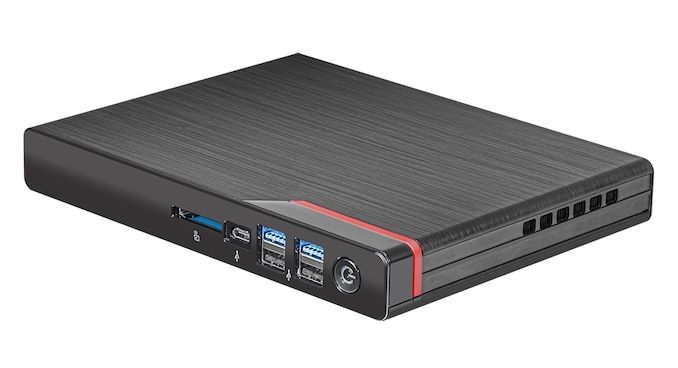

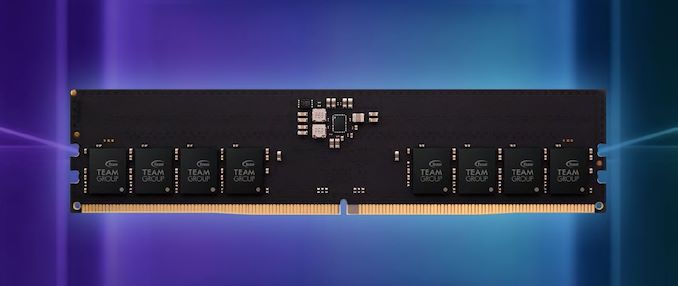
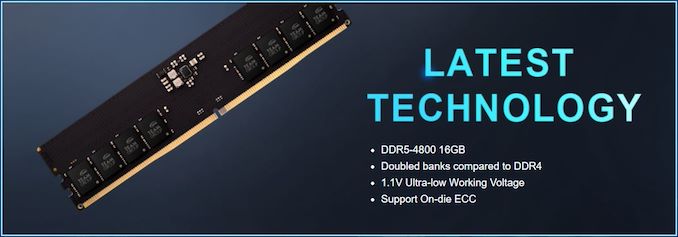
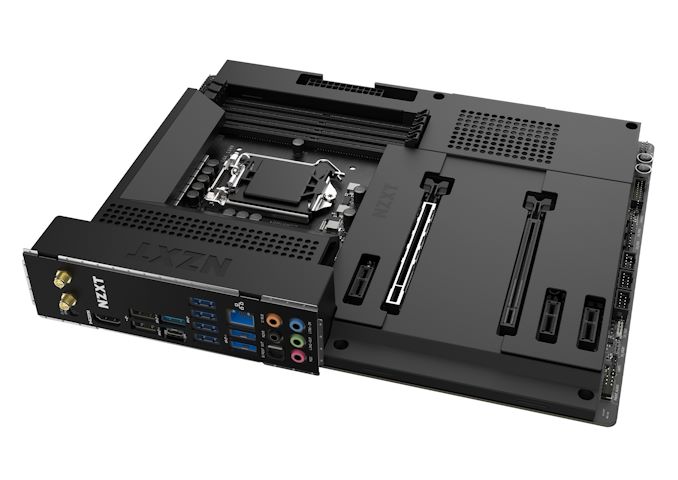
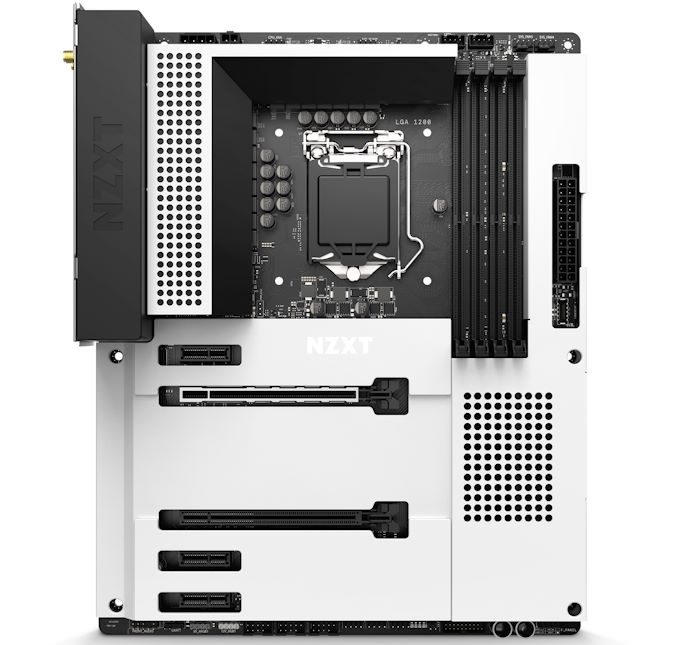



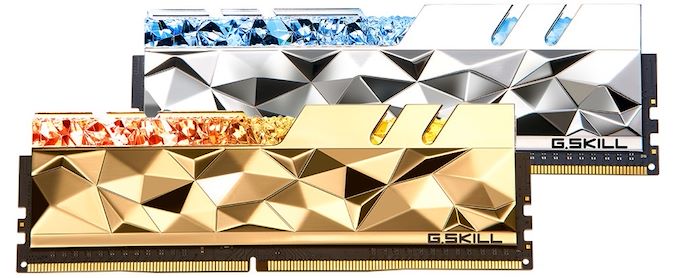
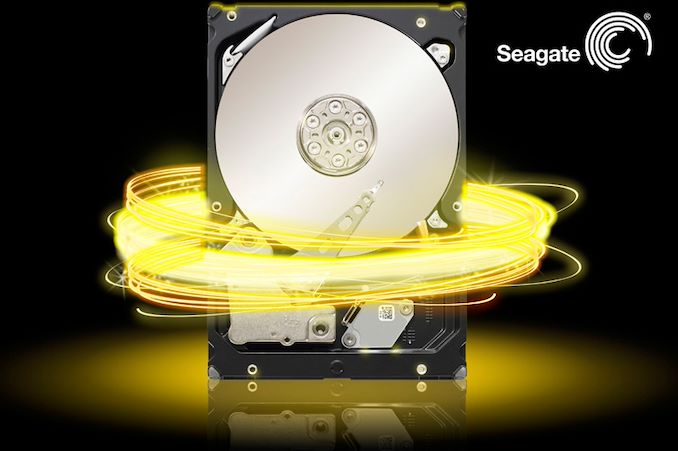

















Bookmarks